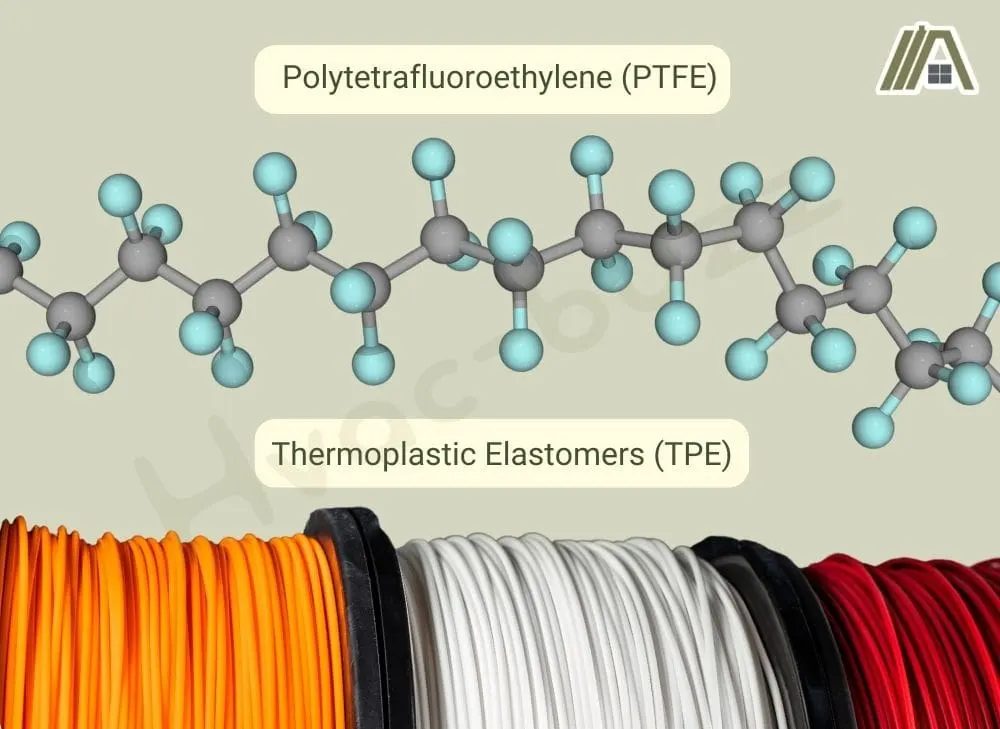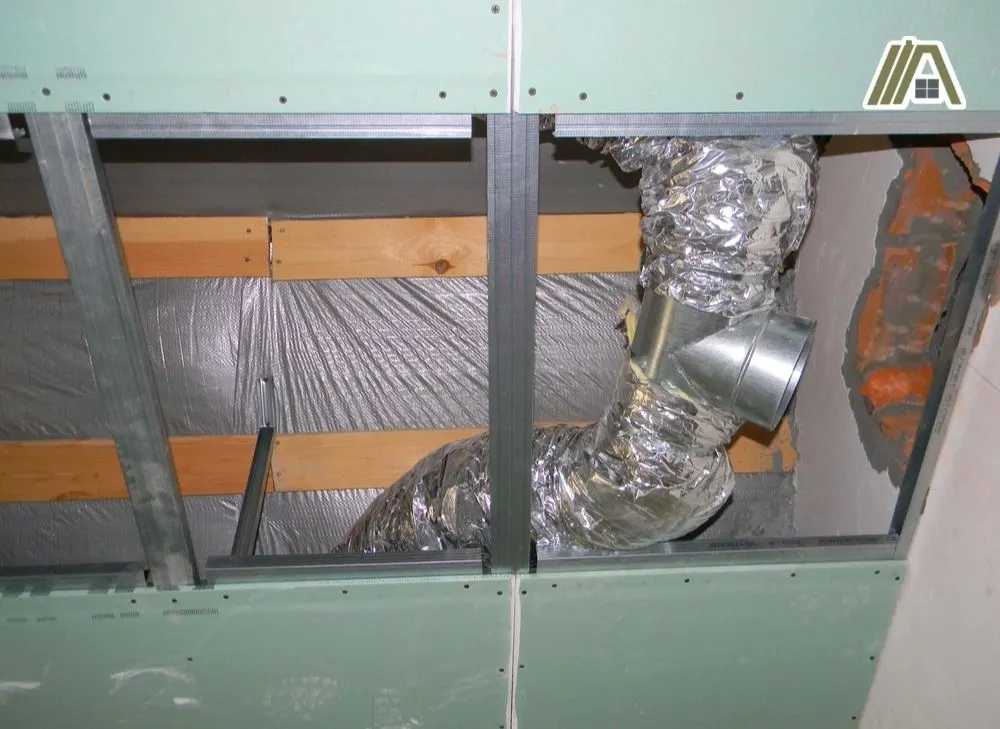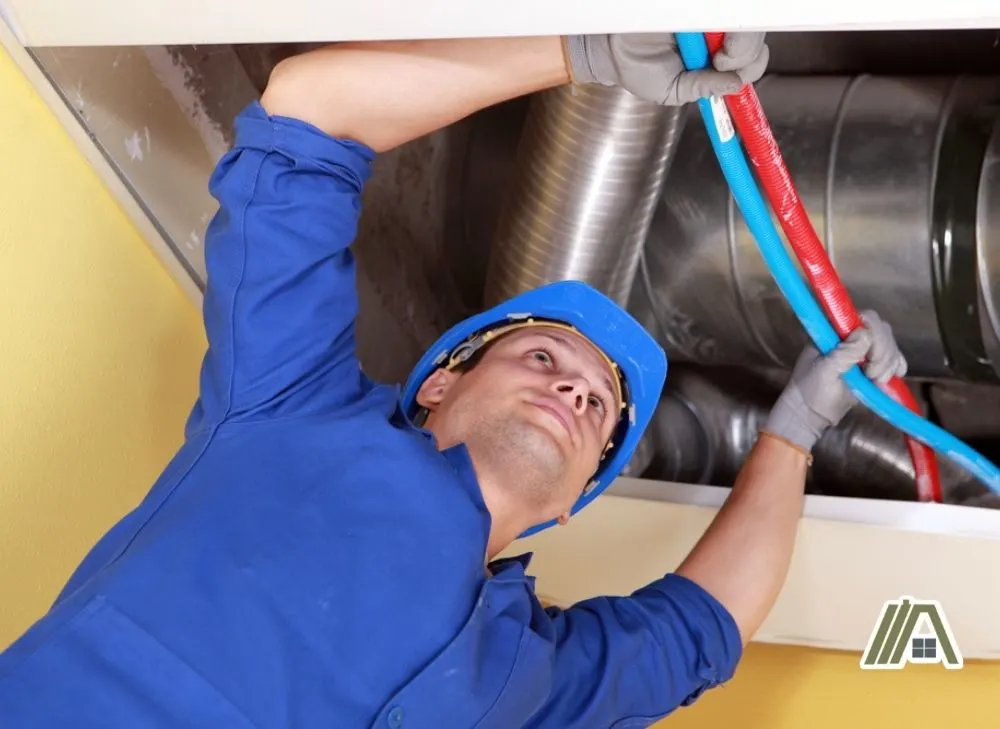The space in your ceiling is limited, so when wires, insulation, ductwork, pipes, and more have to all fit together, there is bound to be contact. Sometimes, this contact is fine; other times, it’s dangerous. Dryer ducts are hot, and wires don’t like excessive heat, so this is a combo that needs to be assessed carefully.
To understand the potential dangers of having wires in contact with dryer vents, one must first understand what wiring insulation is and what happens to it when it overheats. Then, the International Residential Code (IRC) can be consulted for their recommendations.

The code doesn’t explicitly prohibit dryer vents and electrical wires from touching. However, wiring has to be protected from physical damage. If the dryer is hot enough to damage the wire insulation or if the dryer manufacturer prohibits the contact, then the two must not touch in order to be code-compliant.
Electrical Wiring Is Insulated
Electrical wire insulation is very important for the safety of your home and its occupants. Its main purpose is to keep the current contained inside the electrical wire so that fires and electrocutions can be avoided.
There are many different types of wire insulation but the main types include plastics, fluoropolymers, and rubbers.
One type of plastic insulation is polyvinyl chloride—or PVC (this is used for Romex). This wire insulation can be used in a variety of applications and can withstand temperatures from -67 °F to 221 °F. That’s pretty awesome!
Fluoropolymer examples are Polytetrafluoroethylene (PTFE) and Thermoplastic Elastomers (TPE).

Rubber insulation includes substances such as silicone and fiberglass.
The many types of insulation can be suited for different applications, or they can be ideal for most wiring situations. Wiring applications include automotive or household appliance applications as well as use in ceramic and glass kilns.
Since the insulation of wiring surrounds the metal parts of the wire on the interior, the exterior is also technically protected. This means that, technically, the insulation protects the outside from the wiring and the wiring from the outside.
Insulation can protect the wires from external heat sources but only at temperatures within the insulation’s suggestions.
What Are Romex Wires Insulated With?
Romex is a brand of non-metallic sheathed electrical cable (NMC/NM). The covering on NMC and NM cables is designed to be flame-resistant and moisture-resistant.
Romex sheathing is typically made from PVC (polyvinyl chloride) thermoplastic (plastic with a high-temperature rating). The materials of the sheathing mean that Romex cables are rated for temperatures up to 194 ℉.
Romex cables mustn’t be exposed to heat above this rating. This is because thermoplastics soften and distort when exposed to excessive heat and pressure (hence why compression is not good). When this happens, the covering can break and warp, exposing the metal inside.
The PVC aspect is what makes the cables moisture-resistant. The fact that Romex cables are rated for installment in damp locations is an added benefit since any breaks in dryer ducting can result in condensation leaking out of the exhaust system.
Do Dryer Vents Get Hot Enough to Cause an Issue?
To figure out whether dryer vents can touch wires without causing problems, we must first determine what temperatures are dangerous for wires and what temperatures ducts reach.
The problem with heat being produced by or applied to wires does not lie in the copper wiring but in the insulation material.
Electrical wires’ inner copper wires are not negatively impacted by high heat; it is the insulation materials that will melt or disintegrate with high temperatures.
The exact temperature range depends on the material, but the majority are made to withstand up to 194 °F. Temperatures near this and above are likely to be dangerous for the wire.
Dryer ducts and the exhaust contained within them often get between the temperature range of 125-135 °F.
Since temperatures usually must be near 194 °F for dangerous conditions, it seems that most dryer ducts won’t reach the temperatures needed for wire insulation breakdown and potential electrical failure, fire, and electrocution.
However, when a dryer overheats, not only does the heating element burn out—or, more accurately, when they get hot enough to burn out—but exhaust and exhaust duct temperatures can get above 135 °F, producing potential danger to electrical wires touching the dryer vents.

What Does the Code Say?
The section of the IRC that covers information pertaining to venting dryers is Section M1502.
However, this section does not mention anything about electrical wires and preventing them from touching dryer ducts.
Even in Chapter 38 of the IRC, where electrical wiring methods are detailed, dryer vents are never mentioned.
It seems that the IRC does not have strict regulations about the contact between electrical wires and dryer vents.
However, in Section E3802.3.2 of the IRC, it is said that electrical wires must be protected from physical damage.
This section mostly discusses how wires should be protected, but it can also be interpreted as a rule to prevent physical damage, which overheating from touching a dryer vent could be. So, if the dryer heat exceeds the temperature that the wire insulation can withstand, then the two should not touch.
In addition, if the duct was resting or pressing against the wiring, it would cause mechanical damage to the wiring. In light of this, it’s best not to run the ductwork and wiring in such a way that the former compresses the latter.
Possible Exception
Another IRC rule relating to this predicament that may be hard to miss is stated in Section M1502.1.
The rule is simply to vent the dryer’s exhaust as detailed in the manufacturer’s instructions.
So, if the manufacturer’s instructions say that contact between electrical wiring and dryer vents is prohibited, you must refrain from having wires and dryer vents in contact in order to adhere to the IRC.
Practical Considerations
Let’s say the manufacturer’s instructions for your dryer ducts do not list having wires in contact with the ducts as dangerous. Can you have them in contact and still be code-compliant?
The answer is yes, but it might not be a wise choice.

For one, dryer vents carry air that is not only hot but also moist. Electricity and moisture should not interact.
If there was a crack in the duct, moisture that has condensed in the broken dryer duct could leak out and come in contact with adjacent wires.
When wires are in contact with moisture, the current can increase since water is a conductor of electricity.
This dangerous increase in current can cause short circuits or even electrical fires.
Additionally, although most dryer ducts won’t get hot enough to cause a wire to overheat, the chance is increased since wires get hot when they carry electricity.
Heat is released from the wire because of the resistance in the wire.
When a wire has internal forces creating heat (electricity flow) as well as external forces creating heat (contact with a dryer vent), the added heat can create temperatures that damage the insulation.
When the insulation is damaged and the interior copper wires are exposed, the hot wire can come in contact with the ground or neutral wire and short-circuit. This short-circuit can cause sparks to fly, which can lead to fires.
Exposed hot wires can also cause electrocution if someone comes in contact with them.
With these dangerous circumstances in mind, it may be best to keep wires from touching dryer vents.
Sources
https://www.copper.org/consumers/copperhome/HomePlan/safety/is_your_electrical_wiring_too_hot.html

